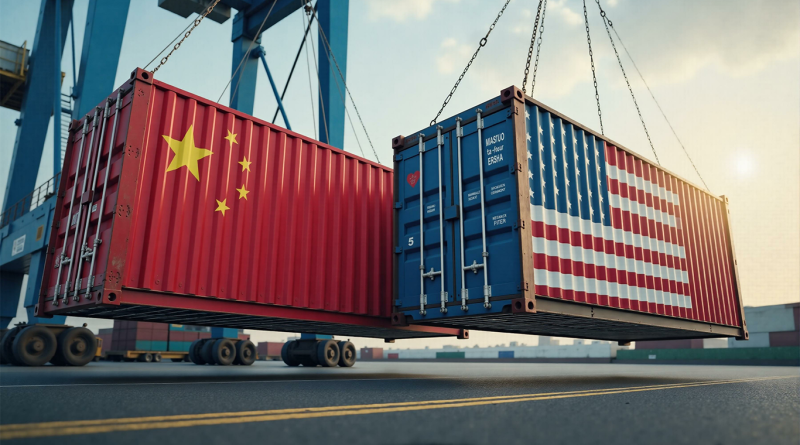Trade Disruptions Set to Test Resilience of US and Chinese Supply Chains
Recent global events and changing trade policies have placed supply chain resilience at the forefront of business strategy. A survey conducted by AIMMS and Iter Consulting examined how prepared companies in the US, China, Germany, the UK, and Sweden are for potential disruptions.
The results revealed a stark contrast between US and Chinese companies. While 43% of Chinese respondents described themselves as ‘very prepared’ for supply chain challenges, most US firms reported feeling ‘neutral’ or ‘not prepared.’ This gap underscores differing approaches to managing supply chain risks.
China’s preparedness stems from its well-established role as a global manufacturing leader. Companies benefit from strong domestic supply chains and government-backed programs designed to enhance resilience. By contrast, US firms often face greater challenges due to reliance on external suppliers and limited investment in domestic production.
The reluctance of US companies to embrace onshore manufacturing
Despite discussions about reshoring, only 8% of US companies are actively developing domestic manufacturing capabilities, according to the survey. Many US companies depend heavily on China for manufacturing, where scale, efficiency, and lower costs are unmatched. Shifting production domestically requires significant upfront investment, a move that some businesses are reluctant to make amid uncertain trade policies.
In the solar industry, for instance, US manufacturers continue to source critical components such as photovoltaic cells from China. This reliance highlights the difficulty of creating competitive domestic supply chains. With labor costs and integration challenges deterring reshoring efforts, US firms risk exposure to future disruptions.
The Trump administration’s impact on trade and global supply chains
The Trump administration’s renewed focus on protectionist trade policies has further stressed global supply chains. Key measures, such as tariffs of 10% to 25% on Chinese imports and proposed penalties on goods from other trade partners, have caused ripple effects across industries.
The solar sector, heavily reliant on Chinese-made components, has felt the impact acutely. Tariffs have driven up costs, delayed projects, and added financial pressure on companies working toward renewable energy goals. Uncertainty around trade negotiations has complicated planning for many businesses, as fluctuating import costs force them to absorb higher expenses or pass these on to consumers.
Chinese companies and their supply chain advantage
Unlike their US counterparts, Chinese companies have shown greater confidence in their supply chain strategies. As a global manufacturing leader, China has built resilience through government-backed initiatives and advanced production methods.
Chinese firms often invest in vertically integrated systems, reducing their dependence on external suppliers. This approach, particularly evident in the solar industry, allows them to control every step of the production process, from raw materials to finished goods.
China’s emphasis on infrastructure development supports its manufacturing dominance. Access to efficient transportation networks, raw materials, and state-sponsored incentives has allowed firms to adapt quickly to disruptions.
The differences between the US and China’s supply chain strategies reflect broader economic and strategic contrasts. While Chinese companies leverage strong domestic ecosystems, US firms often face fragmented efforts and inconsistent policy support.
In sectors like solar energy, US manufacturers remain heavily reliant on Chinese suppliers, highlighting vulnerabilities in their supply chains. Meanwhile, Chinese companies dominate global production by using economies of scale and streamlined processes.
The disparity in supply chain preparedness between the US and China underscores the complexities of today’s global trade environment. As Chinese companies capitalize on resilience and adaptability, US firms must address critical gaps in their strategies to compete effectively.
Sources:
To keep up-to-date with our latest supply chain news, subscribe to our newsletter today.
